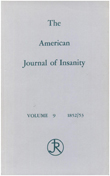Regionally specific pattern of neurochemical pathology in schizophrenia as assessed by multislice proton magnetic resonance spectroscopic imaging
Abstract
OBJECTIVE: Several single-voxel proton magnetic resonance spectroscopy (1H-MRS) studies of patients with schizophrenia have found evidence of reductions of N-acetyl-aspartate (NAA) concentrations in the temporal lobes. Multislice proton magnetic resonance spectroscopy imaging (1H- MRSI) permits simultaneous acquisition and mapping of NAA, choline- containing compounds (CHO), and creatine/phosphocreatine (CRE) signal intensities from multiple whole brain slices consisting of 1.4-ml single-volume elements. We have used 1H-MRSI to assess the regional specificity of previously reported changes of metabolite signal intensities in schizophrenia. Hippocampal volume was also measured to test the relationship between 1H-MRSI findings and tissue volume in this region. METHOD: Ratios of areas under the metabolite peaks of the proton spectra were determined (i.e., NAA/CRE, NAA/CHO, CHO/CRE) for multiple cortical and subcortical regions in 10 inpatients with schizophrenia. RESULTS: Patients showed significant reductions of NAA/CRE and NAA/CHO bilaterally in the hippocampal region and in the dorsolateral prefrontal cortex. There were no significant changes in CHO/CRE or in NAA ratios in any other area sampled. No significant correlation was found between metabolite ratios in the hippocampal region and its volume. CONCLUSIONS: NAA-relative signal intensity reductions in schizophrenia appear to be remarkably localized, involving primarily the hippocampal region and the dorsolateral prefrontal cortex, two regions implicated prominently in the pathophysiology of this disorder.
Access content
To read the fulltext, please use one of the options below to sign in or purchase access.- Personal login
- Institutional Login
- Sign in via OpenAthens
- Register for access
-
Please login/register if you wish to pair your device and check access availability.
Not a subscriber?
PsychiatryOnline subscription options offer access to the DSM-5 library, books, journals, CME, and patient resources. This all-in-one virtual library provides psychiatrists and mental health professionals with key resources for diagnosis, treatment, research, and professional development.
Need more help? PsychiatryOnline Customer Service may be reached by emailing [email protected] or by calling 800-368-5777 (in the U.S.) or 703-907-7322 (outside the U.S.).



